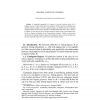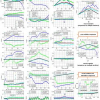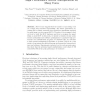2950 search results - page 9 / 590 » Computing with Infinitely Many Processes |
CVPR
2011
IEEE
12 years 11 months ago
2011
IEEE
How many people should you ask if you are not sure about your way? We provide an answer to this question for Random Forest classification. The presented method is based on the st...
JSYML
2002
13 years 7 months ago
2002
A computably enumerable (c.e.) degree is a maximal contiguous degree if it is contiguous and no c.e. degree strictly above it is contiguous. We show that there are infinitely many ...
ICIP
2008
IEEE
14 years 9 months ago
2008
IEEE
The Extended Kalman Filter (EKF) is suitable for real-time pose estimation due its low computational demand and ability to handle the nonlinear perspective camera model. There are...
MFCS
2000
Springer
13 years 11 months ago
2000
Springer
Abstract. A binary sequence A = A(0)A(1) . . . is called infinitely often (i.o.) Turing-autoreducible if A is reducible to itself via an oracle Turing machine that never queries it...
EUROPAR
2009
Springer
14 years 2 months ago
2009
Springer
Moore’s Law suggests that the number of processing cores on a single chip increases exponentially. The future performance increases will be mainly extracted from thread-level par...



